
Unlocking Expressive Language: A Comprehensive Guide to Adjectives Worksheets for Grade 4
The English language, in its vibrant tapestry, owes much of its richness and descriptive power to adjectives. These powerful words paint pictures, evoke emotions, and provide crucial details, transforming bland statements into vivid narratives. For a Grade 4 student, mastering adjectives is not merely about memorizing a grammar rule; it’s about unlocking a new dimension of expression in both reading and writing. This comprehensive guide delves into the significance, types, and effective strategies for utilizing adjectives worksheets for Grade 4 to foster a deep and lasting understanding.
The Foundational Role of Adjectives in Grade 4 Language Arts
By Grade 4, students are transitioning from basic sentence construction to more complex and nuanced writing. They are beginning to read longer, more intricate texts and are expected to comprehend not just the plot, but also the subtle details and character descriptions. This is precisely where adjectives become indispensable.
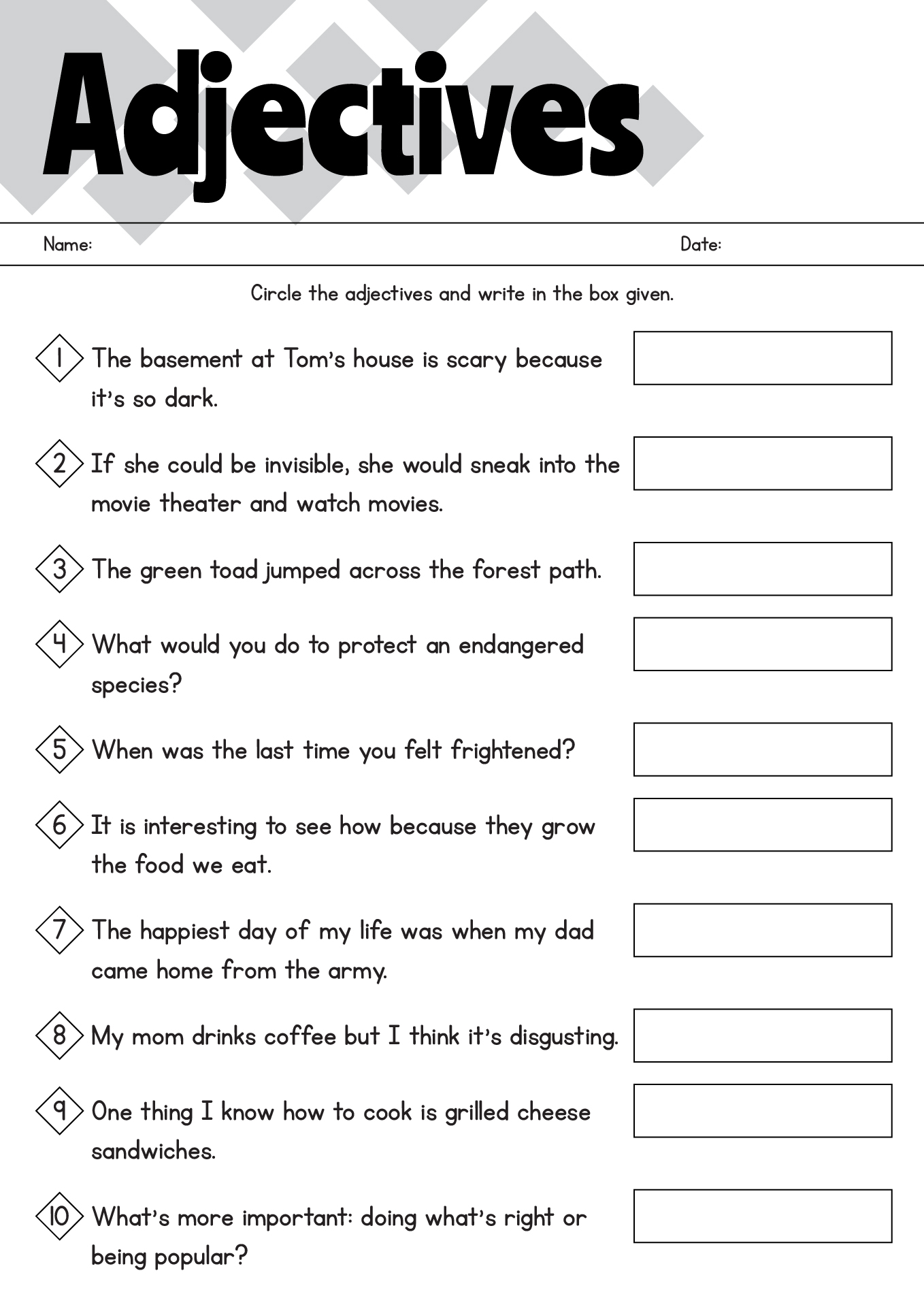
At this stage, adjectives serve several critical functions:

- Enhancing Descriptive Writing: Adjectives allow students to move beyond generic descriptions like "The dog was big" to "The shaggy, brown dog with floppy ears barked loudly." This not only makes their writing more engaging but also helps them communicate their ideas more precisely.
- Improving Reading Comprehension: When students encounter adjectives in texts, they are better equipped to visualize scenes, understand character traits, and grasp the author’s intent. Recognizing adjectives helps them piece together a more complete mental image of the story.
- Expanding Vocabulary: Actively working with adjectives naturally introduces students to a wider range of descriptive words. This organic vocabulary growth is far more effective than rote memorization.
- Building Grammar Foundations: Understanding adjectives lays the groundwork for more advanced grammatical concepts, such as adverbs, prepositional phrases, and complex sentence structures. It solidifies their understanding of how different parts of speech function within a sentence.
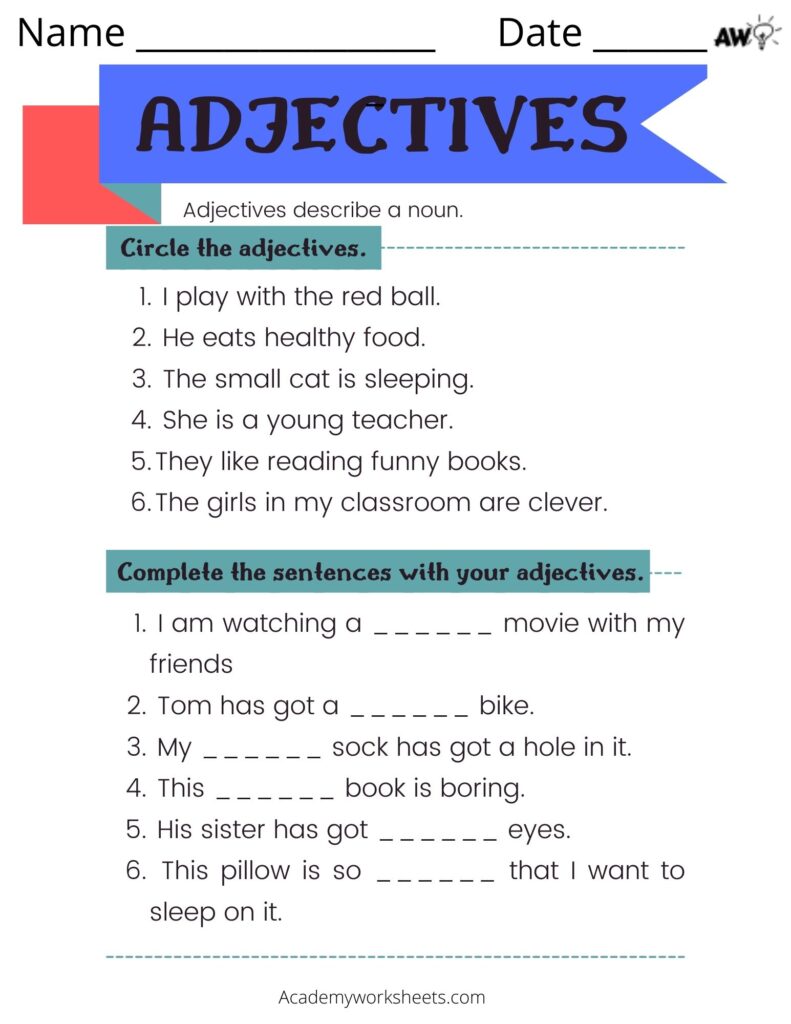
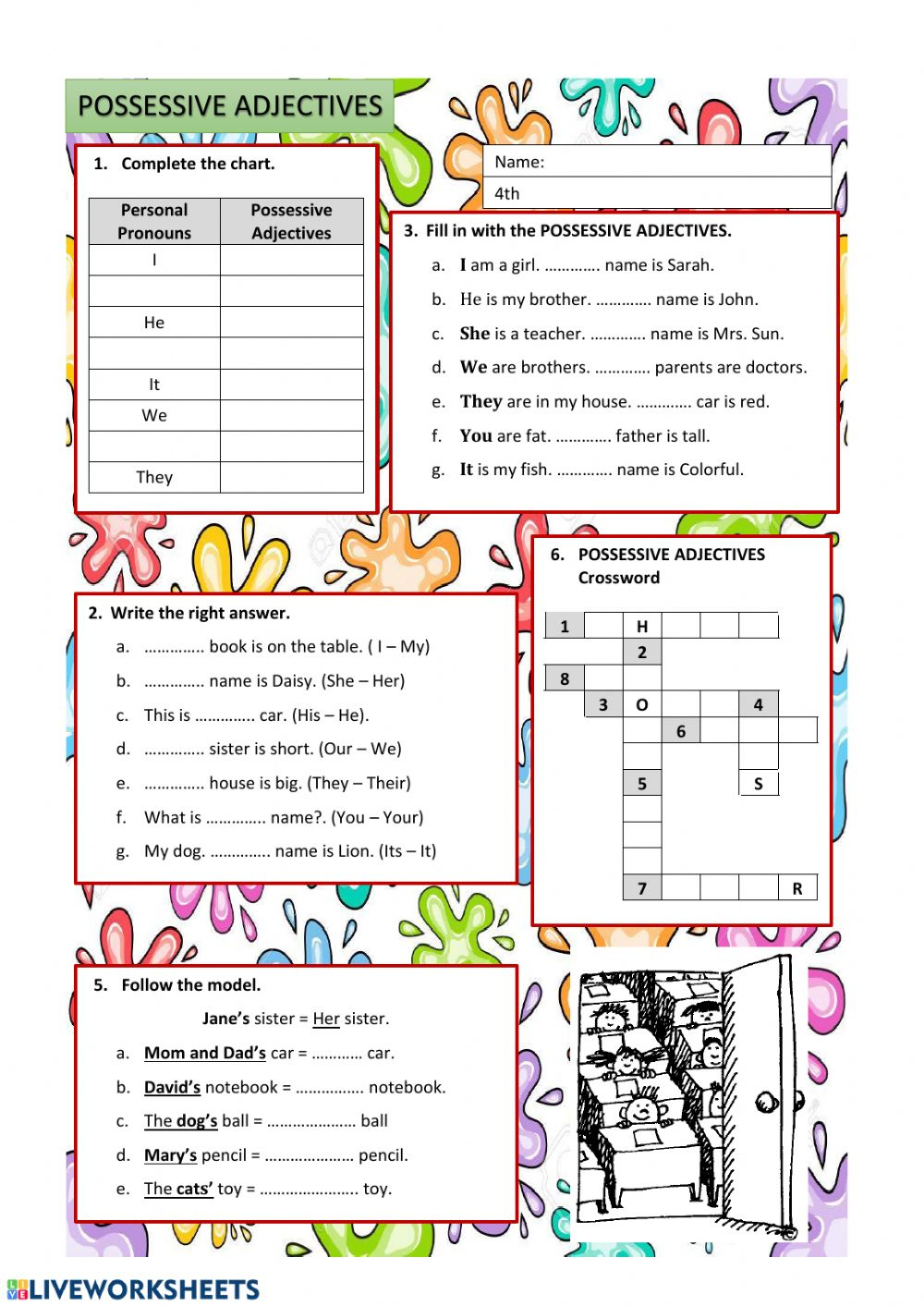
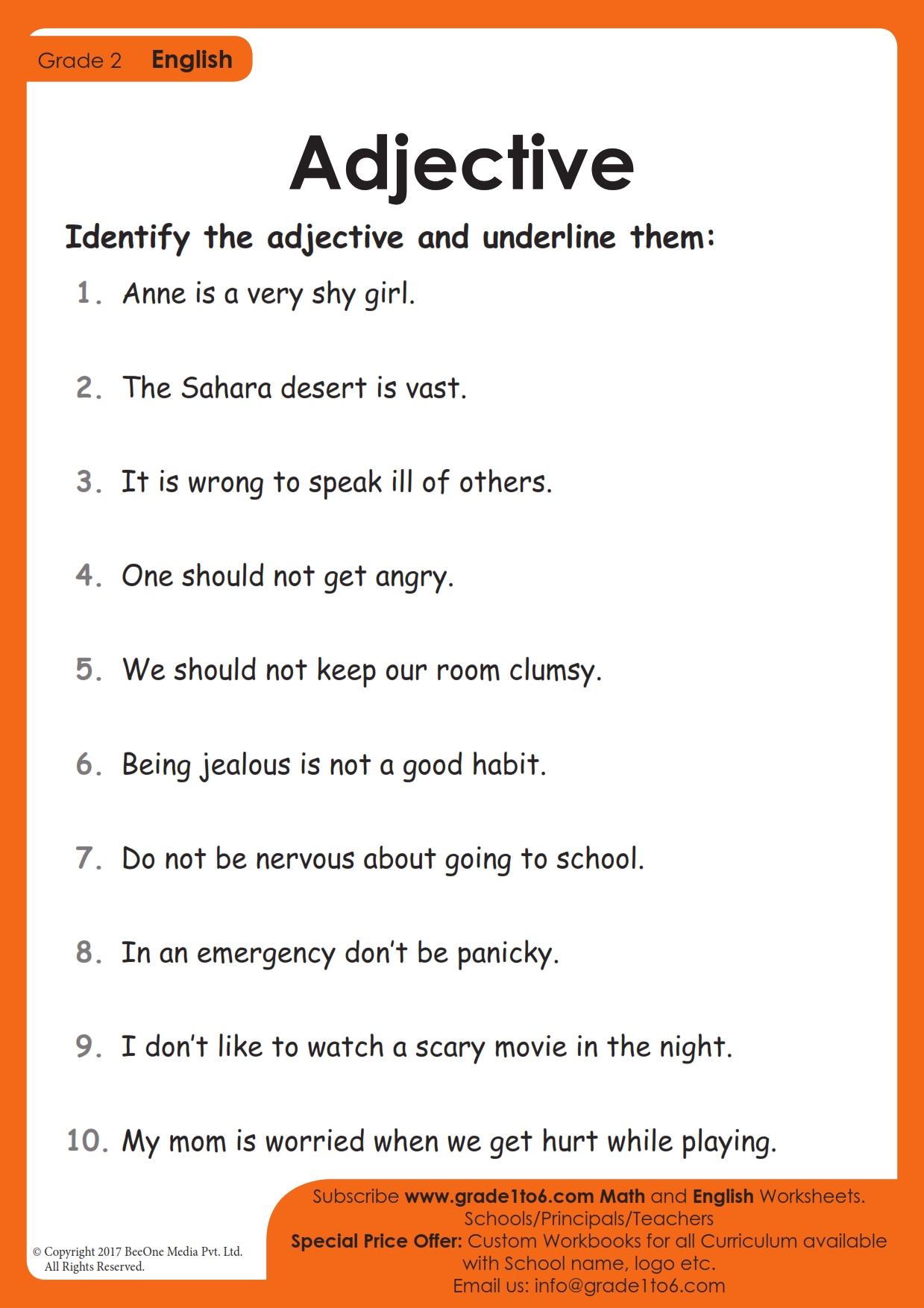
Therefore, the strategic implementation of adjectives worksheets for Grade 4 is paramount. These tools provide structured practice, reinforce learning, and allow educators and parents to identify areas where students might need additional support.
Characteristics of Effective Adjectives Worksheets for Grade 4

Not all worksheets are created equal. For Grade 4 students, who are at a critical developmental stage, effective adjectives worksheets should possess several key characteristics:
- Age-Appropriate Content: The vocabulary and sentence structures should align with a Grade 4 reading level, avoiding overly complex or simplistic language.
- Engaging and Varied Activities: Repetitive drills can lead to boredom. Worksheets should offer a mix of activities: identification, matching, fill-in-the-blanks, sentence creation, creative writing prompts, and even drawing activities.
- Clear and Concise Instructions: Students should be able to understand what is expected of them without excessive adult intervention.
- Visual Appeal: Incorporating simple illustrations, clear layouts, and appropriate use of white space can make worksheets less intimidating and more inviting.
- Progressive Difficulty: Worksheets should gradually increase in complexity, starting with basic identification and moving towards application in context and higher-order thinking tasks.
- Real-World Relevance: Connecting adjectives to everyday objects, people, and situations makes the learning more tangible and meaningful.
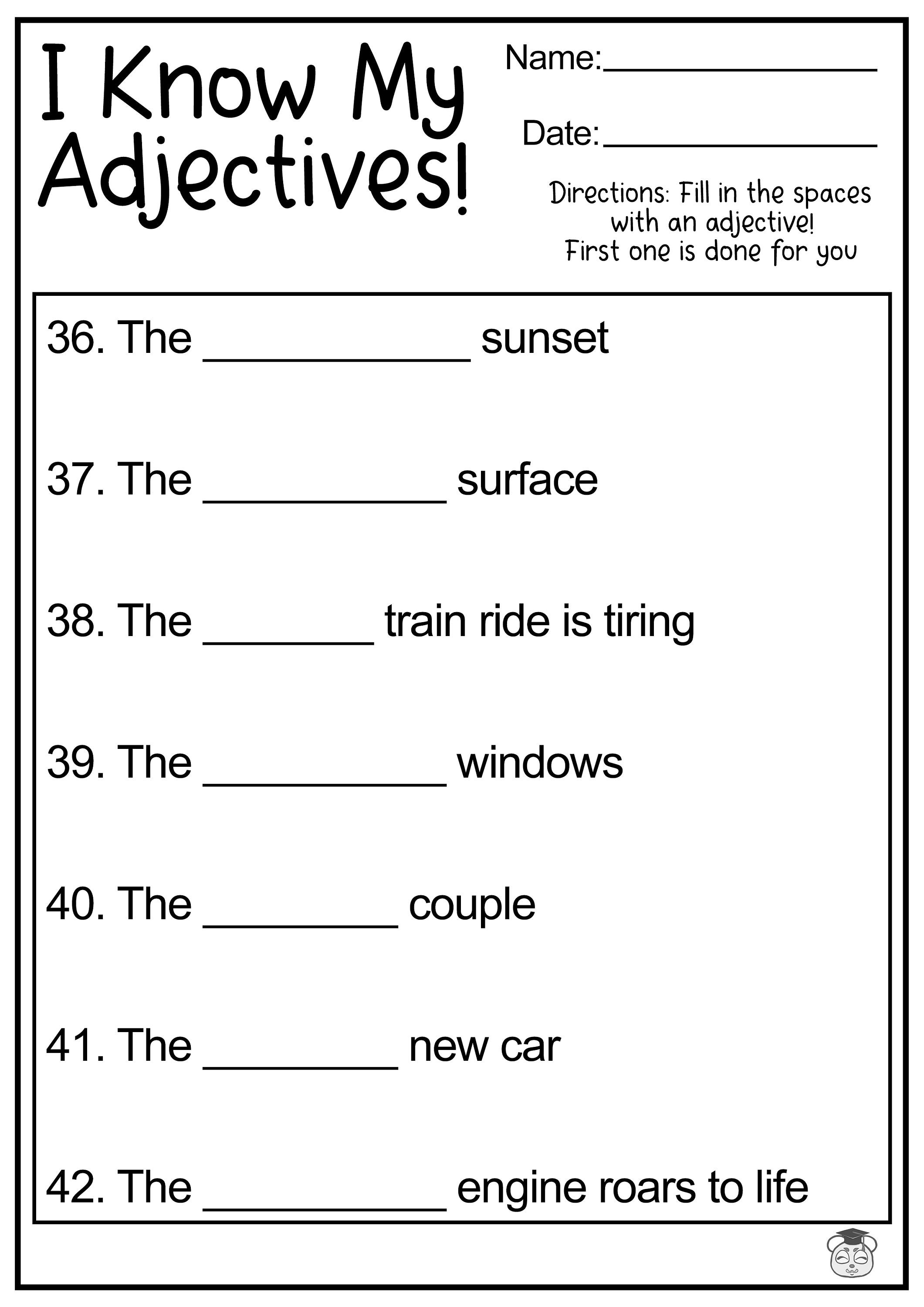
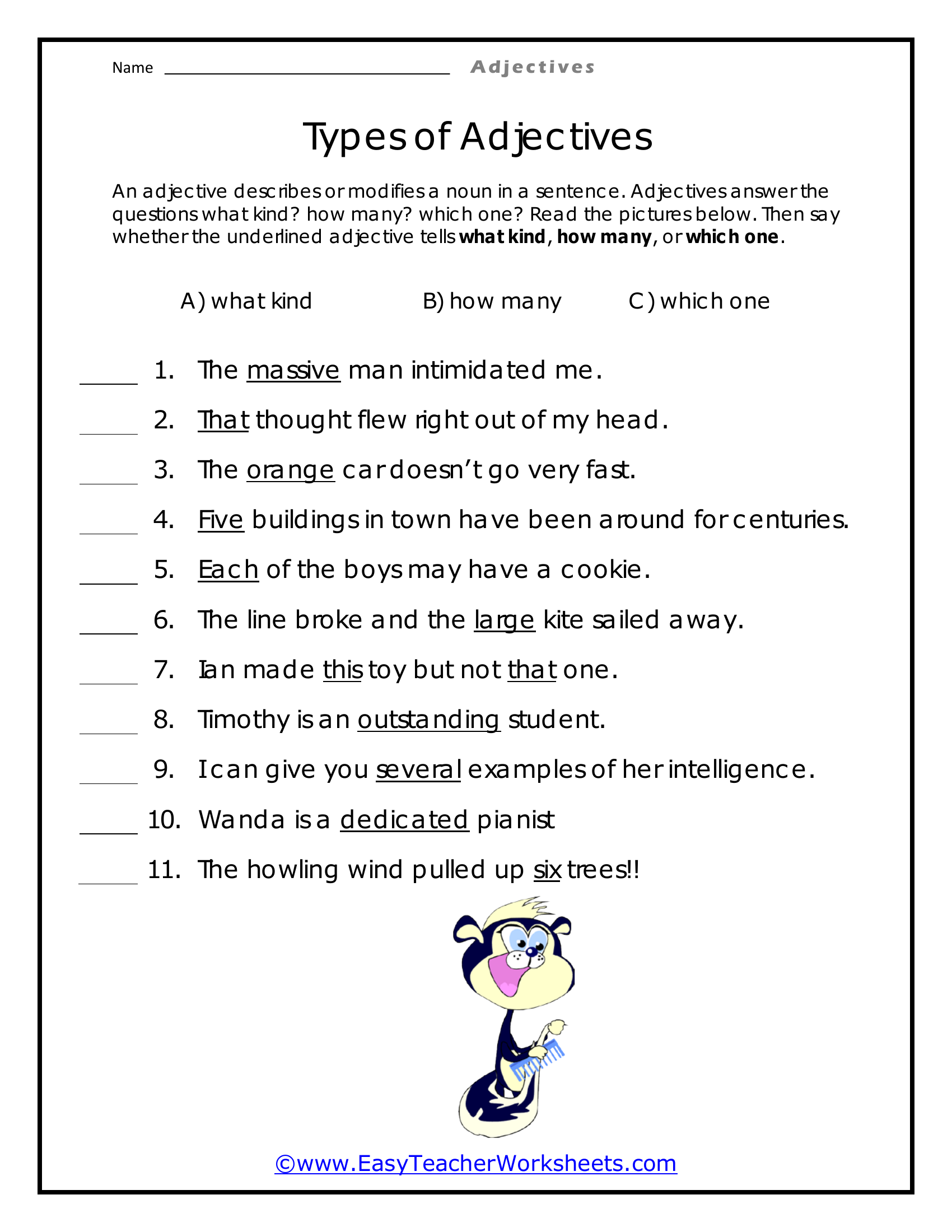

Types of Adjectives and Corresponding Worksheet Activities for Grade 4
A comprehensive approach to teaching adjectives in Grade 4 involves introducing various types systematically. Here’s a breakdown of key adjective categories and how they can be effectively taught through worksheets:
-
Descriptive Adjectives: These are the most common type, describing qualities, characteristics, or states of nouns and pronouns.
- Worksheet Activities:
- Identification: Students circle or underline adjectives in given sentences or passages.
- Matching: Match adjectives from a word bank to nouns they can describe (e.g., "fluffy" to "cloud," "spicy" to "pepper").
- Fill-in-the-Blanks: Provide sentences with missing adjectives, allowing students to choose from a list or come up with their own.
- Sentence Creation: Give a noun and ask students to write sentences describing it using multiple adjectives.
- "Show, Don’t Tell": Provide a bland sentence (e.g., "The house was old") and ask students to rewrite it using descriptive adjectives to make it more interesting (e.g., "The creaky, abandoned house stood silently on the deserted street").
- Adjective Scavenger Hunt: Students read a short story or passage and list all the adjectives they find.
- Worksheet Activities:
-
Comparative and Superlative Adjectives: These adjectives are used to compare two or more nouns. Comparative adjectives (e.g., taller, faster, more beautiful) compare two things, while superlative adjectives (e.g., tallest, fastest, most beautiful) compare three or more.
- Worksheet Activities:
- Forming Comparatives/Superlatives: Provide a list of adjectives and ask students to write their comparative and superlative forms (e.g., "big" -> "bigger," "biggest"). Include irregular forms like "good," "better," "best."
- Sentence Completion: Provide sentences that require a comparative or superlative adjective to complete the comparison (e.g., "The giraffe is than the zebra." "Mount Everest is the mountain in the world.").
- Picture Comparison: Show three objects or animals and ask students to write sentences comparing them using both comparative and superlative adjectives.
- "Which is Which?": Present a scenario with multiple options and ask students to choose the correct comparative or superlative to describe the best fit.
- Worksheet Activities:
-
Demonstrative Adjectives: These adjectives (this, that, these, those) point out specific nouns.
- Worksheet Activities:
- Identification and Usage: Students identify demonstrative adjectives and then use them correctly in sentences, often with pictures indicating proximity (e.g., a hand pointing to a nearby apple for "this," or a distant tree for "that").
- Fill-in-the-Blanks with Context: Sentences where the context (e.g., "Look at the stars far away.") dictates whether "these" or "those" should be used.
- Worksheet Activities:
-
Possessive Adjectives: These adjectives (my, your, his, her, its, our, their) show ownership or possession.
- Worksheet Activities:
- Matching Pronouns to Possessives: Match personal pronouns (I, you, he, she) to their corresponding possessive adjectives.
- Sentence Completion: Fill in the blanks with the correct possessive adjective based on the subject of the sentence (e.g., "Sarah lost _____ book.").
- Rewriting Sentences: Change sentences to use possessive adjectives (e.g., "The car belongs to John" -> "It is his car.").
- Worksheet Activities:
-
Interrogative Adjectives: These adjectives (which, what, whose) are used to ask questions about nouns.
- Worksheet Activities:
- Question Formation: Given a statement, students form a question using an interrogative adjective (e.g., "The red car is mine." -> "Which car is yours?").
- Choosing the Right Interrogative: Select the correct interrogative adjective to complete a question.
- Worksheet Activities:
-
Articles (A, An, The): While often taught as a separate category, articles function adjectivally as they specify or generalize nouns.
- Worksheet Activities:
- A/An/The Selection: Choose the correct article based on the noun’s initial sound and specificity.
- Passage Correction: Identify and correct incorrect article usage in a given paragraph.
- Worksheet Activities:
-
Quantitative and Numerical Adjectives: These describe the quantity or number of nouns (e.g., many, few, some, several, one, two, first, second).
- Worksheet Activities:
- Counting and Describing: Students count objects in a picture and describe them using numerical adjectives.
- Quantifier Selection: Choose the appropriate quantitative adjective for a given sentence (e.g., "There were students in the classroom, but only came early.").
- Worksheet Activities:
Beyond the Worksheet: Integrating Adjectives Learning
While adjectives worksheets for Grade 4 are invaluable, they are most effective when integrated into a broader language arts curriculum.
- Reading Aloud: When reading to students, pause and discuss the adjectives. Ask questions like, "What word did the author use to describe the castle? What does that tell us about it?"
- Creative Writing: Encourage students to consciously use adjectives in their stories, poems, and descriptive paragraphs. Provide checklists or rubrics that include adjective usage.
- Adjective Games:
- Adjective Charades: Students act out an adjective, and others guess.
- "I Spy" with Adjectives: "I spy with my little eye something that is sparkling and tiny."
- Adjective Brainstorm: Give a noun and have students brainstorm as many adjectives as possible to describe it.
- Picture Description: Show a complex picture and ask students to write or verbally describe it using as many adjectives as possible.
- Word Walls: Create an "Adjective Word Wall" where students can contribute new descriptive words they encounter.
- Peer Review: Encourage students to give feedback on each other’s writing, specifically looking for opportunities to add or improve adjective usage.
Common Challenges and Solutions in Teaching Adjectives to Grade 4
- Confusion with Adverbs: Students sometimes confuse adjectives (which describe nouns/pronouns) with adverbs (which describe verbs, adjectives, or other adverbs).
- Solution: Dedicated worksheets that directly contrast adjectives and adverbs, focusing on what each word type modifies. Use color-coding or different symbols to highlight the word being described.
- Overuse of Simple Adjectives: Students might stick to common adjectives like "nice," "good," "big."
- Solution: Provide synonym lists for common adjectives. Encourage the use of a thesaurus. Challenge them to replace overused adjectives with more precise ones (e.g., "huge," "enormous," "colossal" instead of "big").
- Lack of Transfer to Writing: Students might perform well on worksheets but not apply the knowledge in their own writing.
- Solution: Make the connection explicit. After completing a worksheet, immediately transition to a writing activity where they must apply the learned concept. Provide prompts that specifically encourage descriptive language.
- Boredom with Repetitive Drills:
- Solution: Vary the format of adjectives worksheets for Grade 4. Incorporate fun elements, puzzles, or creative tasks. Use digital interactive exercises.
Conclusion
The journey to mastering language is a continuous one, and for Grade 4 students, a solid understanding of adjectives is a monumental leap forward. Well-designed adjectives worksheets for Grade 4, when used thoughtfully and integrated into a dynamic learning environment, empower young learners to become more articulate readers, more expressive writers, and more confident communicators. By providing structured practice, encouraging creativity, and fostering a love for descriptive language, we equip them with the tools to paint their world with words, making their thoughts and stories truly come alive.
